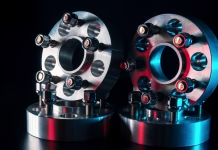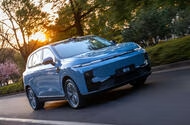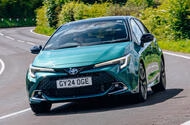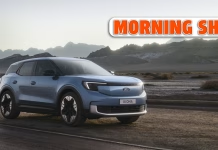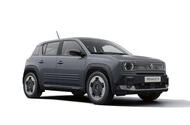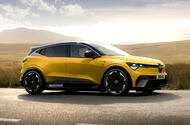Modern classic cars surge as Gen X and millennials drive up values and reshape...
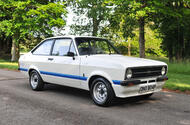 Boomer favourites fading as younger buyers begin to dictate what's hot – and what's not
Boomer favourites fading as younger buyers begin to dictate what's hot – and what's not
A Ford Escort RS 1800 that sold at auction in July for a record £276,848 is evidence of the growing appeal of modern classics to the Gen X and millennial generations, who now have the money and desire to realise their childhood poster-car dreams, say experts.
Backing the claim, the same experts point to a similar model sold in 2015. Compared with July’s example, which was merely a restored former press car, this RS 1800 had been rallied by Ari Vatanen and Roger Clark, yet it sold for just £85,500, or £118,800 if adjusted for inflation.
Peter Haynes, marketing and business boss at RM Sotheby’s, said the scarcity and appeal of modern classics from the past 50 years are major influences on the prices that these new generations of buyers are paying for them.
“When did you last see a Ford Sierra XR4i or a Vauxhall Cavalier SRi?,” he asked. “They may have been volume sellers, but many have been scrapped and are today extremely rare and so increasing in desirability and price. It’s a generational thing that has been happening over the past 10 years.
“Thirty to 60-year-old enthusiasts are increasingly drawn to the cars of their youth. At all price points, people are buying the cars they most identify with.”
John Glynn, managing director of Specialist Car Valuations, said interest in modern classics isn’t confined to the usual suspects such as BMW M cars and Mercedes-AMGs.
“The 2009/10 scrappage schemes have made most cars that survived more desirable, often to people who do a bit of ‘man maths’ to justify spending over the odds,” he said. “Some people are making a lot of money and, with profits on private sales of used cars being free of capital gains tax, buying in-demand classics or those with potential is a smart investment.”
He continued: “At the other end of the price spectrum, even youngsters excluded from the housing market by high prices are instead spending £5000 to £10,000 on fledgling modern classics. From Ford Escort XR3 cabriolets to Land Rover Freelanders, the best examples are all becoming more expensive.”
However, John Mayhead, editor of the Hagerty Price Guide, believes the market isn’t as buoyant as recent eye-catching auction results might suggest.
“Only 70% of Hagerty Price Guide cars rose in value during the past year,” he said. “The post-Covid rush to buy and the explosion in online auction sales sent prices to new heights but many have since fallen to more affordable levels. The market is divided and nuanced, with exclusive top cars still in huge demand and performance variants of, for example, 997-generation Porsche 911s enjoying a lot of interest.
“Modern classics beloved of Gen X buyers, including Renault 5 Turbos, Ford Escort XR3is and Sierra Cosworths, Peugeot 205 GTis and Volkswagen Golf GTIs, also continue to prosper.
“The casualties in the shift to modern classics are the older, traditional cars including Triumph TR2s, TR3s and TR4s, MGBs and even MGFs, Austin-Healey 3000s, Aston Martin DB2s, DB4s, DB5s and DB6s and Jaguar E-Types. Prices for many of these have fallen, which of course is making them more affordable. However, garaging and maintaining them isn’t getting any cheaper, dampening their appeal.”
Haynes agreed: “The best E-Types still command high prices, but there are lots of lesser examples at far lower prices. Today’s sales are dominated by modern supercars. They are the new stars of the auctions, although more cars such as the most desirable Subaru Impreza Turbos and Nissan Skylines are beginning to break through and, of course, fast Fords.”
Wheel Spacers What You Need to Know About Bearing Damage
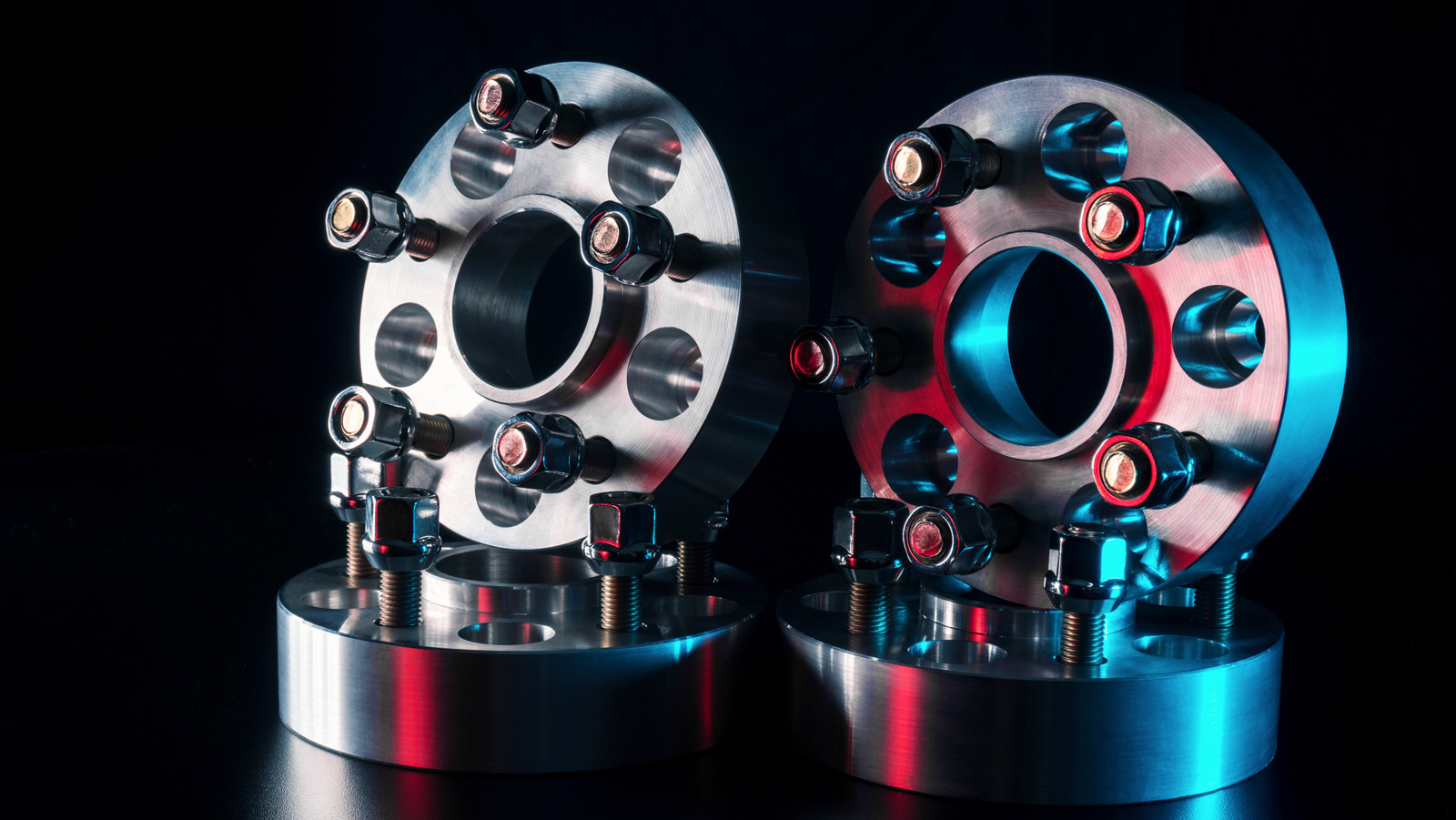
Leapmotor Electric Cars Set for European Production in Spain with New B10 and B05...
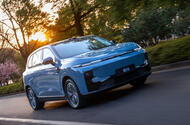 B10 crossover and B05 hatchback are the most likely candidates for European production
B10 crossover and B05 hatchback are the most likely candidates for European production
Leapmotor has reprised plans to build cars in Europe as part of an expansion that includes the imminent launch of two new, more European-friendly models.
The Chinese brand, of which Stellantis owns a majority of the international rights, will build cars in Spain, according to Stellantis CEO Antonio Filosa.
Speaking at an event for financial group Kepler Cheuvreux, Filosa is reported by Automotive News Europe as confirming Spain as the European production site for Leapmotor from 2026, although he didn't say which factory or model.
The report claims the Zaragoza plant, which currently builds the Peugeot 208, Opel/Vauxhall Corsa and Lancia Ypsilon, is the most likely production site, given its planned expansion to include a new €4.1 billion gigafactory for LFP batteries as part of a joint venture between Stellantis and Chinese supplier CATL.
The B10 is the most likely model to be built initially in Spain – a 4.5m-long crossover pitched right into the heart of the C-segment. The related B05 hatchback could also follow.
European production will allow Leapmotor to avoid the additional 20.7% it has to pay in tariffs to the EU for importing EVs from China.
The brand's launch line-up in Europe, including the UK, are the T03 city car and the C10 SUV. Both of these models were designed and engineered before the Stellantis deal was struck. However, Tianshu Xin, CEO of Leapmotor International, said that future models will benefit from work at Stellantis's European R&D facilities to make them more Euro-friendly, including the impending B10 and B05 (pictured below).
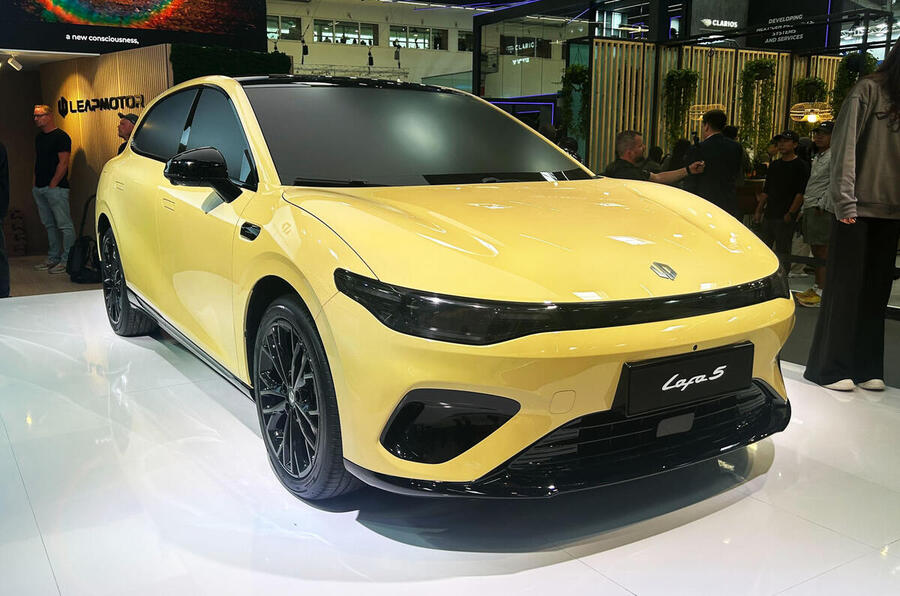
"Being a brand making a car developed and produced in China, it takes time to understand European customer behaviour," Xin told Autocar. "Our job is to collect the feedback from customers and feed it into the engineering team, and they are able to fix and improve constantly.
"The speed of improvement and the focus of the energy going into production improvement is very impressive."
Reflecting on the brand's first year in Europe at the recent Munich motor show, Xin said he was "happy to see the progress" made but "if you're asking me if I'm satisfied, I will say 'no, I think we can do even better'".
He said he expected that progress to "accelerate with the B10".
Leapmotor will stick to its plan of pricing below rivals (the C10 and B10 are both priced more in line with cars in the segment below).
Xin said the fact that the company controls so much of its own supply chain and makes so much in-house allows it to be so competitive.
"This means Leapmotor can optimise the cost from the design phase to the manufacturing phase," he explained. "It doesn't have to communicate with supplier A, B, C to make things work on the car."
The fact that Leapmotor started out as an electronics company also gives it an edge in the EV sphere, Xin said.
He also said the brand had worked hard to build trust with retailers to remove "pain points" that some have experienced with other Chinese car makers, who have suffered from quality issues, parts shortages or simply disappeared from the market.
The integration with Stellantis gives Leapmotor a huge advantage there too, he added.
Fume event dangers how toxic jet engine leaks are making passengers and crew sick

Toyota Corolla Hybrid Leads Family Hatchbacks with Fresh Efficiency and Style
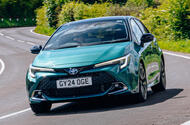 British-built family hatchback takes on the Volkswagen Golf class with hybrid power – now even more efficient The Toyota Corolla is one of the longest-running and best-selling nameplates in the industry.It has been on sale here since 1966, though it went away for a bit in 2008. 'Corolla' had become synonymous with boring cars, so Toyota replaced it with the Toyota Auris, which was equally grey.Along with chairman Akio Toyoda’s “no more boring cars” edict, Toyota realised that it wasn’t the name that was the issue, so when this generation launched in 2019, it brought back the Corolla name, and went to quite a bit of trouble to make it compete at the sharp end of the hatchback class, which includes everything from the Volkswagen Golf and Vauxhall Astra to the Mazda 3 and Mercedes A-Class.Now, 12th-generation Corollas are everywhere in the UK, and it’s easy to forget what a sharp-looking, handsome car it is, looking rather trim in a world of SUVs.A facelift in 2023 introduced a few worthwhile technical improvements – now Toyota has brought in some more updates for the 2025 model, but we're most intrigued by the new hybrid set-up which lowers the power of the 2.0-litre configuration.Shoud this British-built hatchback be on your shortlist? Read on to find out.
British-built family hatchback takes on the Volkswagen Golf class with hybrid power – now even more efficient The Toyota Corolla is one of the longest-running and best-selling nameplates in the industry.It has been on sale here since 1966, though it went away for a bit in 2008. 'Corolla' had become synonymous with boring cars, so Toyota replaced it with the Toyota Auris, which was equally grey.Along with chairman Akio Toyoda’s “no more boring cars” edict, Toyota realised that it wasn’t the name that was the issue, so when this generation launched in 2019, it brought back the Corolla name, and went to quite a bit of trouble to make it compete at the sharp end of the hatchback class, which includes everything from the Volkswagen Golf and Vauxhall Astra to the Mazda 3 and Mercedes A-Class.Now, 12th-generation Corollas are everywhere in the UK, and it’s easy to forget what a sharp-looking, handsome car it is, looking rather trim in a world of SUVs.A facelift in 2023 introduced a few worthwhile technical improvements – now Toyota has brought in some more updates for the 2025 model, but we're most intrigued by the new hybrid set-up which lowers the power of the 2.0-litre configuration.Shoud this British-built hatchback be on your shortlist? Read on to find out.Ford EV demand drops in Europe while Nissan faces EV shortages in Japan

Renault 4 Van Expands Electric Range With Practical Cargo Upgrade
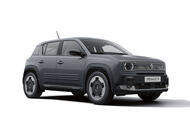 Retro electric crossover swaps rear seats for a load tray; priced from equivalent of £25k
Retro electric crossover swaps rear seats for a load tray; priced from equivalent of £25k
The new Renault 4 EV has gained a new cargo van variant, swapping its rear seats for a plastic load tray and lashing hooks.
The removal of the rear seats gives the converted crossover a cargo capacity of 1045 litres, while its maximum payload is rated at 345kg.
A mesh bulkhead is offered as an optional extra and, depending on the market in which the van is sold, it also comes with functions to prevent the rear doors and windows from opening; an anti-slip mat for the load bay; or a privacy cover for the load bay.
Unlike many commercial variants of cars, such as the Skoda Enyaq Cargo, the rear windows aren't tinted for privacy as standard.
The 4 Van has yet to be confirmed for the UK but is currently under evaluation for sales here.
In its native France, prices start from €29,300 – equivalent to £25,000, excluding VAT.
That nets the entry-level powertrain that isn’t offered in UK-market versions of the four-seat 4. Pairing a 118bhp front-mounted motor with a 40kWh battery, it yields 191 miles of range and can be charged from 15-80% in 30 minutes.
The 4 Van can also be had with a more potent 148bhp motor and 52kWh battery, boosting range to 254 miles. This has a higher peak charging rate of 100kW compared with the smaller pack’s 80kW but still takes 30 minutes to charge from 15-80%.
The conversion is performed by Renault’s in-house customisation service, Qstomize, at the Maubeuge plant in France where the 4 is produced.
Transmission changes ahead why repairing old gearboxes may no longer make sense

Renault Megane E-Tech Leads Hot Hatch Revival With Performance Makeover
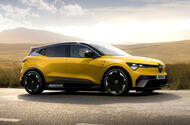
Autocar image shows what the "hot" new Megane could look likeRefresh is part of effort to revive hatch after sales began to dive earlier this year
Renault is poised to launch a range-topping performance version of the Megane E-Tech next year as part of a radical styling makeover that will reposition the EV as a hot hatch.
The move is motivated by a desire to revive the Megane E-Tech’s appeal and reverse a sharp fall in sales of the car over the past 18 months.
Speaking at the Munich motor show, Renault brand CEO Fabrice Cambolive confirmed the Megane E-Tech will be repositioned as “a hot hatch or a hot car”, adding: “That’s the direction we want to go in.”
He also told reporters that Renault is exploring the viability of a new performance model and will show the “first proposals” within 12 months.
While he declined to give further details, the two are expected to be linked.
The brand’s last true dedicated sporting model was the fourth-generation Megane RS hot hatch, which went out of production in 2023 with the 296bhp Ultime run-out special.
Renault has begun experimenting with sportier models again recently, bringing to market the exclusive, £140,000 5 Turbo 3E – a 533bhp hyper-hatch designed to show what a Renault performance EV is capable of.
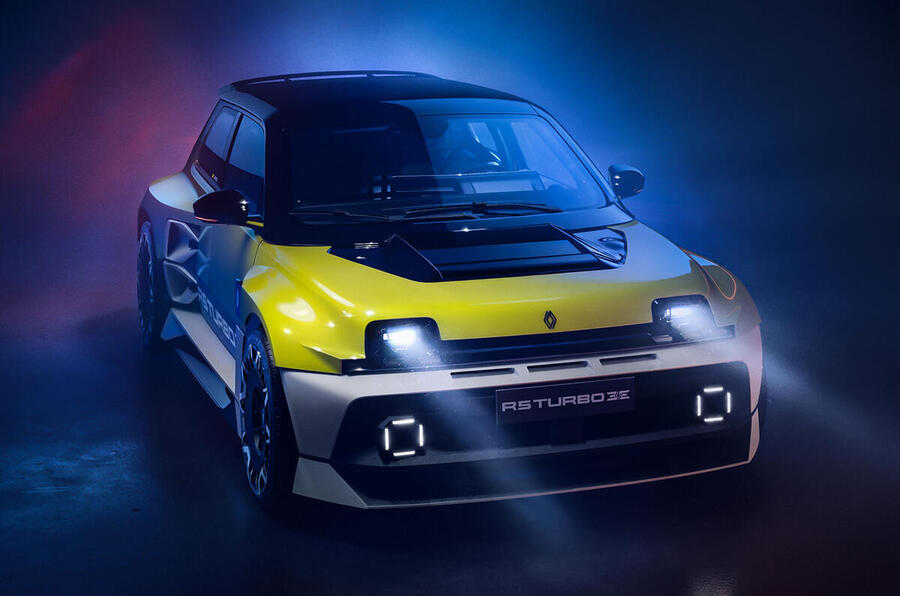
The new top-rung Megane E-Tech model isn’t expected to receive such a lofty power output, but a more feasible option is apparent from its Ampr Medium platform-mates.
Of those, the new Alpine A390’s bespoke 464bhp tri-motor powertrain isn’t likely to be transferred to the Megane E-Tech, but the Nissan Ariya Nismo’s 429bhp dual-motor set-up could be in play. The current Megane E-Tech is offered exclusively with a single electric motor and a topend output of 215bhp.
It is not yet known if the new range-topping Megane E-Tech will take the Renaultsport name.
Cambolive hinted that the Renault Group could decide to continue using the Alpine brand exclusively for dedicated sports cars.
Previously, in February, the Renault Group’s then CEO, Luca de Meo, described Renaultsport to Autocar as being “in the fridge” and said that while “everything sporty would be building on Alpine”, that “doesn’t mean that sometimes this thing wouldn’t be revived”.
On the viability of the Megane E-Tech rangetopper potentially spawning a series of new performance cars, Cambolive said “we have to find the right balance” between cost and demand before any approval is given.
To that end, Renault Clio product line manager Emmanuel de Jesus Pequeno recently told Autocar that a hot version of the new sixth-generation supermini is not currently on the cards. This is because of the “compromise” between the level of investment required to transform it into a hot hatch and the level of expected demand.
A refresh of the Megane E-Tech has been a big focus for Renault, said bosses. The model was launched in 2022 as one of Renault’s first new-age electric cars.
Following its initial success, the Megane E-Tech has subsequently been challenged by a growing number of newer rivals, some of which are delivering more for less than the hatch’s £32,495 asking price. As a result, sales have fallen sharply – down 67% (to 10,082) in Europe for the fi rst half of 2025 compared with the year before.
Speaking about the Megane E-Tech’s 2026 refresh, Cambolive said it will get a larger battery. This is likely to be the 91kWh pack used in the Ariya Nismo and Scenic. In the hot Nissan, the battery offers up to 310 miles of range.
Autocar understands the facelift will bring a new grille, new daytime-running lights and a lower, wider stance, although Renault Group design boss Laurens van den Acker would not be drawn into specifics.
On the need to refresh the hatch, van den Acker admitted: “We need to sell more of it.” He added: “If you put a new battery in the car, which is very expensive, and you don’t change the car, then it’s really hard to seduce people to pay more for it.
“So we needed to justify the change underneath the skin by showing something on the skin. And then we thought that what the world was missing was kind of a hot-looking EV. And so we thought we had nothing to lose, so we’ll just push that.”
Wheel Bearings Warning Signs You Should Never Ignore for Your Safety



